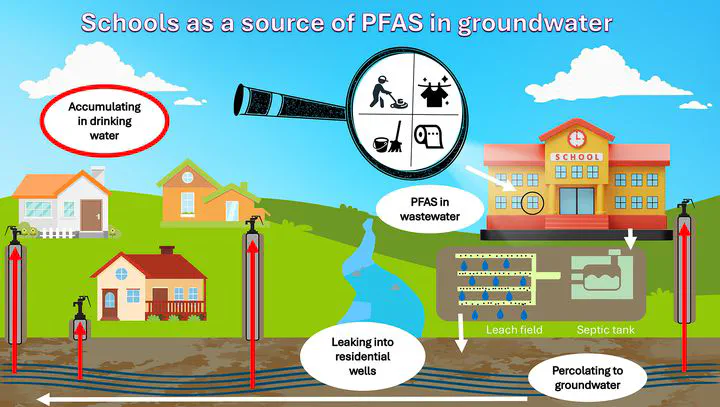Examining Potential PFAS Contamination of Private Wells from a High School in Rural Maine
Dec 1, 2024·,,,,,,,·
0 min read
L. Moran Sosa
A. Taylor
A. Garretson
A. Backus
K. Richards
J. H. Graber
R. F. Hilliard
J. E. Disney

Abstract
Per- and polyfluoroalkyl substances (PFAS), or “forever chemicals,” have been used for decades in consumer and industrial products to confer nonstick, moisture, and stain-resistant properties. They are increasingly found in surface water and groundwater and have been associated with impacts on human and ecosystem health worldwide.1,2 In 2016, PFAS were discovered in the water and soil on a dairy farm in Maine. Wastewater and industrial sludge had been used as fertilizer on the farm, a practice common on Maine farms from the 1970s through the 2000s.3 The Maine Department of Environmental Protection (DEP) tested household wells in surrounding communities and discovered many with PFAS levels exceeding the state standard of 20 ng/L total for six PFAS contaminants (hereafter referred to as ME-6): perfluorooctanoic acid (PFOA), perfluorooctane sulfonic acid (PFOS), perfluorohexane sulfonic acid (PFHxS), perfluorononanoic acid (PFNA), perfluoroheptanoic acid (PFHpA), and perfluorodecanoic acid (PFDA).
Type
Publication
Environmental Health Perspectives